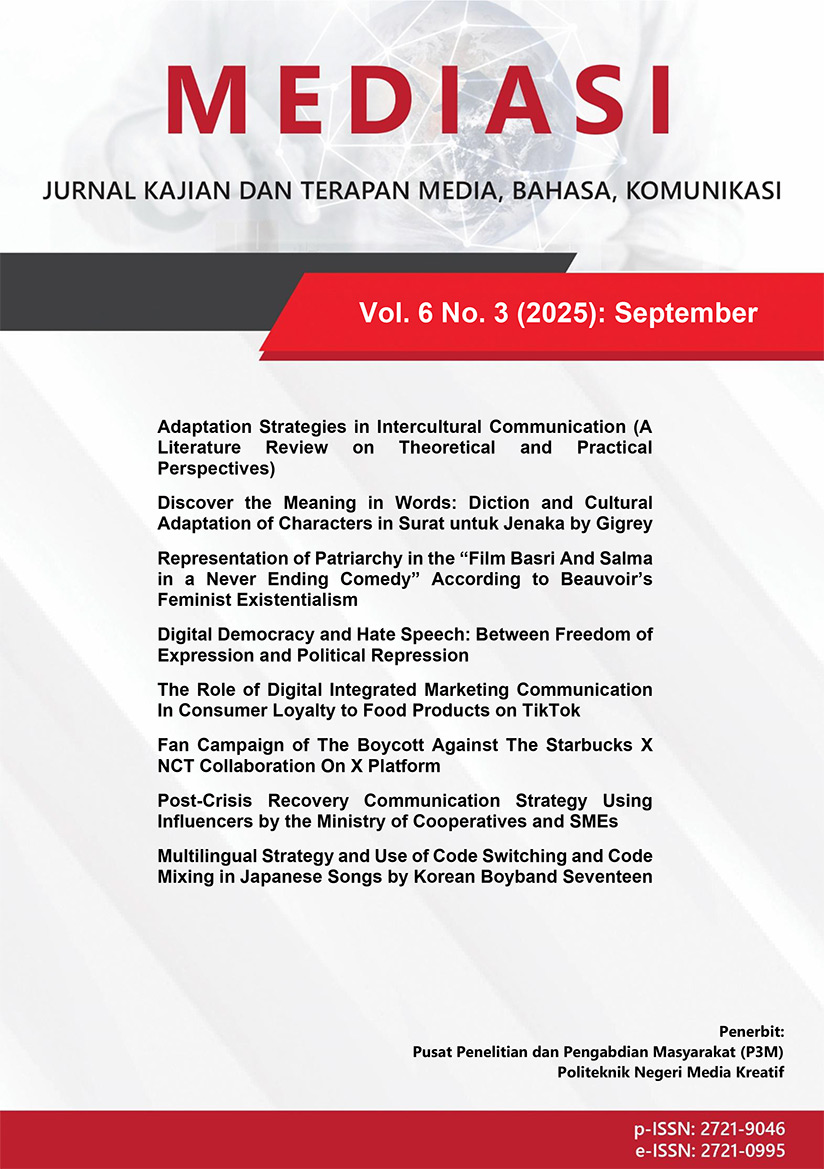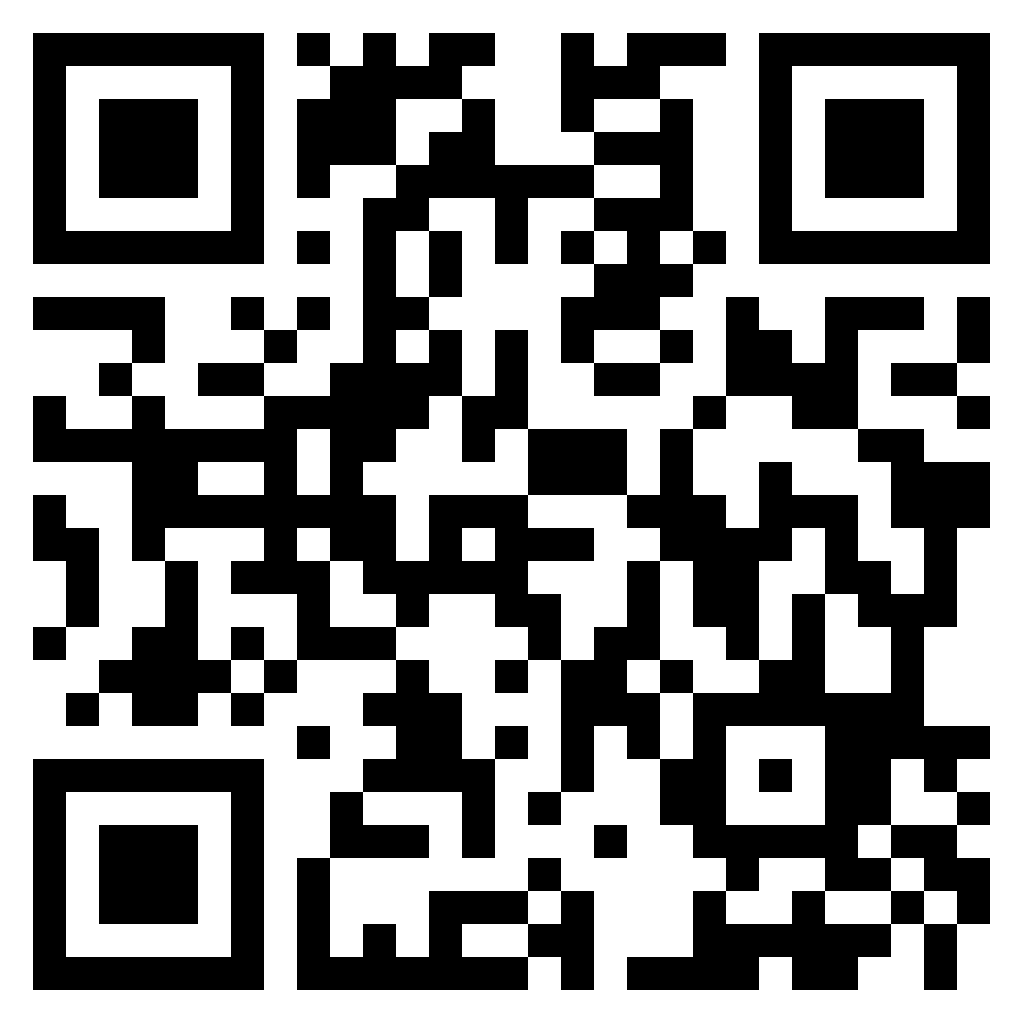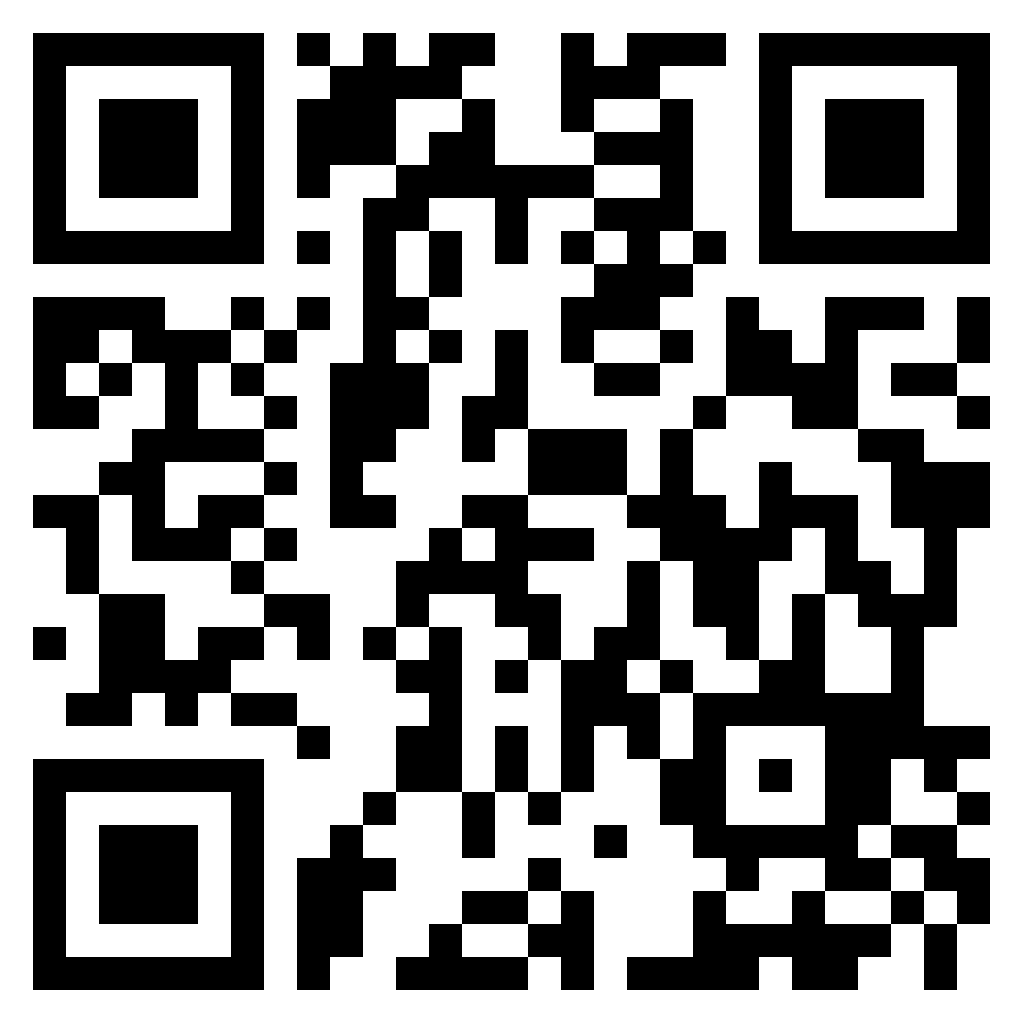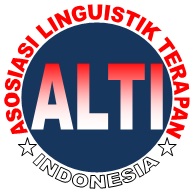Post-Crisis Recovery Communication Strategy Using Influencers by the Ministry of Cooperatives and SMEs
DOI:
https://doi.org/10.46961/mediasi.v6i3.1773Keywords:
Influencer, Crisis Communication, Madura Stall, Repair, Social-Mediated Crisis CommunicationAbstract
The digitalization era has brought significant changes in how communication is conducted, especially during crises. One of the challenges faced is how the government handles crises that affect public reputation. This study aims to analyze the crisis communication strategies employed by the Ministry of Cooperatives and SMEs (KemenKopUKM) in managing crises through the use of influencers. The theories utilized in this research are the Social-Mediated Crisis Communication (SMCC) theory and crisis communication theory, which explain how communication mediated through social media can repair damaged public images. The methodology used is a qualitative approach with an in-depth case study design, accompanied by content analysis to examine the meaning of messages conveyed through social media. Data is collected through in-depth interviews with the KemenKopUKM communication team and involved influencers, as well as an analysis of relevant documents. The operationalization of concepts involves identifying key indicators of crisis communication and the effectiveness of using influencers in the repair process.
References
Abidin, C., & Ots, M. (2021). Influencer cultures: The impact of storytelling on audience engagement. Journal of Digital Media & Policy, 12(3), 225-242.
Alwaton, Y. (2023). Komunikasi krisis polri : Strategi image repair polri dalam tragedi kanjuruhan. Translitera, 12(1), 1–9. https://doi.org/https://doi.org/10.35457/translitera.v12i1.2694
Anjani, S., & Irwansyah, I. (2020). Peranan influencer dalam mengkomunikasikan pesan di media sosial instagram [the role of social media influencers in communicating messages using instagram]. Polyglot: Jurnal Ilmiah, 16(2), 203–229. https://doi.org/10.19166/pji.v16i2.1929
Austin, L. L., & Jin, Y. (2020). Social Media and Crisis Communication. Routledge.
Barlian, E. (2016). Metodologi penelitian kualitatif & kuantitatif (satu). Sukabina Press.
Childers, C. C., Lemon, L. L., & Hoy, M. G. (2020). Psychological ownership in social media influencer–brand relationships. Journal of Interactive Advertising, 20(1), 1-13.
Coombs, W. T. (2019). Ongoing Crisis Communication: Planning, Managing, and Responding. SAGE Publications.
Coombs, W. T. (2020). Ongoing Crisis Communication: Planning, Managing, and Responding (5th ed.). SAGE Publications.
Diarra, A. R., & Rahman, S. G. (2024). Komunikasi krisis dana indonesia pada kasus “saldo hilang” untuk mempertahankan reputasi perusahaan. Educationist: Journal of Educational and Cultural Studies, 2(3), 289–295. https://jurnal.litnuspublisher.com/index.php/jecs/article/view/198
Estaswara, H., & Anggraeni, D. (2018). Mengelola corporate crisis melalui transformasi model stakeholder relations di era digital. CoverAge: Journal of Strategic Communication, 9(1), 1–16. https://doi.org/10.35814/coverage.v9i1.1111
Fearn-Banks, K. (2016). Crisis communications : A casebook approach (5th Editio). Routledge. https://doi.org/https://doi.org/10.4324/9781315684857
Fitrah, M. (2018). Metodologi penelitian: penelitian kualitatif, tindakan kelas & studi kasus. CV Jejak (Jejak Publisher).
Heath, R. L., & O’Hair, H. D. (2020). Handbook of Risk and Crisis Communication. Routledge.
Heverin, T., & Zach, L. (2021). "Social Media for Crisis Monitoring and Response: A Systematic Review." Journal of Crisis Management, 39(2), 235-248.
Horn, I. S., Taros, T., Dirkes, S., Hüer, L., Rose, M., Tietmeyer, R., & Constantinides, E. (2015). Business reputation and social media: A primer on threats and responses. Journal of Direct, Data and Digital Marketing Practice, 16(3), 193–208. https://doi.org/10.1057/dddmp.2015.1
Jin, Y., Liu, B. F., & Austin, L. (2019). Examining the role of social media influencers in crisis communication: Insights from the 2018 Facebook crisis. Public Relations Review, 45(4), 101765. https://doi.org/10.1016/j.pubrev.2019.101765
Jin, Y., Liu, B. F., & Austin, L. (2021). Social Media and Crisis Communication. Routledge.
Jin, S., Muqaddam, A., & Ryu, E. (2022). The role of social media influencers in crisis communication: Examining their impact on public trust. International Journal of Strategic Communication, 16(2), 158-175.
Kim, H., & Krishna, A. (2022). "Collaborative Crisis Communication: Enhancing Public Trust through Coordinated Response Strategies." Journal of Public Relations Research, 34(1), 78-94.
Kim, S., & Liu, B. F. (2022). Digital Media and Crisis Communication: Emerging Trends and Future Directions. Public Relations Review, 48(2), 102139.
Leonard, A. (2018). Corporate reputation risk in relation to the social media landscape. University of Pretoria (South Africa).
Maulana, I., Manulang, J. M. br, & Salsabila, O. (2020). Pengaruh Social Media Influencer Terhadap Perilaku Konsumtif di Era Ekonomi Digital. Majalah Ilmiah Bijak, 17(1), 28–34. https://doi.org/10.31334/bijak.v17i1.823
Putri, N. M. L. K. (2024, April). Kementerian koperasi minta warung madura taati aturan jam operasional. DetikBali, 1. https://www.detik.com/bali/bisnis/d-7308201/kementerian-koperasi-minta-warung-madura-taati-aturan-jam-operasional
Rachmat, K. (2015). Public relations, issue & crisis management: pendekatan critical public relation, etnografi kritis & kualitatif. Kencana. https://books.google.co.id/books?id=hey2DwAAQBAJ
Veil, S. R., Buehner, T., & Palenchar, M. J. (2020). A work-in-progress literature review of crisis communication strategies in the digital age. Journal of Strategic Communication, 15(2), 112-128. https://doi.org/10.1080/1553118X.2020.1730456
Vosoughi, S., Roy, D., & Aral, S. (2018). The Spread of True and False News Online. Science, 359(6380), 1146-1151.
Yuanita, D. (2021). Peran key opinion leader dalam strategi public relations pada komunikasi krisis perusahaan. PRofesi Humas, 6, 23–44. https://doi.org/https://doi.org/10.24198/prh.v6i1.29693
Downloads
Published
How to Cite
Issue
Section
Citation Check
License
Copyright (c) 2025 Fitara Tito, Mochammad Kresna Noer

This work is licensed under a Creative Commons Attribution-NonCommercial 4.0 International License.
You are free to:
- Share — copy and redistribute the material in any medium or format
- Adapt — remix, transform, and build upon the material
- The licensor cannot revoke these freedoms as long as you follow the license terms.
Under the following terms: Attribution; NonCommercial; and no additional restrictions.















